The Samsung Galaxy S6 and S6 edge Review
by Joshua Ho on April 17, 2015 9:00 AM EST- Posted in
- Smartphones
- Samsung
- Mobile
- Galaxy S6
- Galaxy S6 Edge
Display
As we briefly discussed in our look at the specifications, the Galaxy S6 line introduces a newer generation of AMOLED displays, which is said to increase maximum luminance to 600 nits. Samsung claims that this was achieved with the use of new materials, which is likely necessary in order to sustain power efficiency improvements. It doesn't seem that AMOLED is uniquely suited to high resolution, but rather that Samsung Display Corp. is managing to dramatically improve how they make AMOLED displays with every year that offset power consumption increases from higher resolution displays.
To find out how Samsung did, we use SpectraCal's CalMAN 5 Ultimate, in addition to X-Rite's i1Pro2 Basic to characterize displays as accurately as possible.
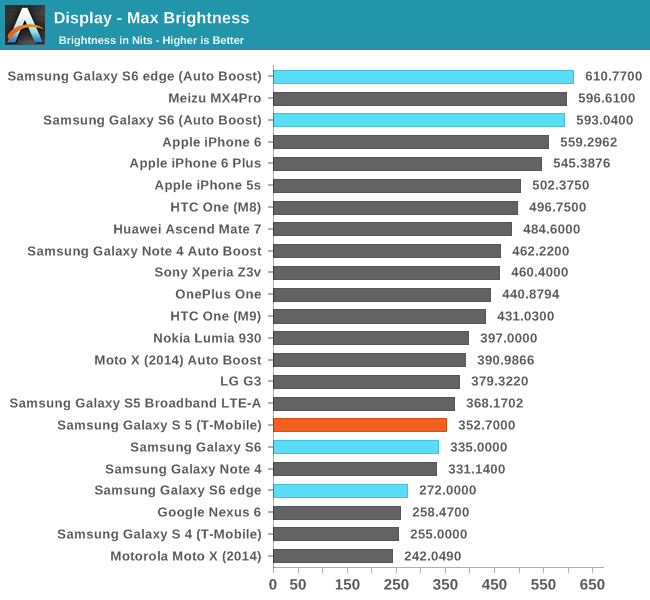
From the results Samsung's claims of a 600 nit display are valid in this case, which is a 100% APL white display. It's important to note that achieving this requires the use of auto-brightness, and that manual brightness is limited to a much lower brightness to reduce power usage, here the S6 sees similar maximum brightness as the S5. The S6 edge disappointingly only achieves 272 nits in this mode, a rather low value. I saw color balance shift dramatically in auto-boost mode, which suggests that this operating mode is likely less efficient than manual brightness. As an explanation, we've seen that colors are controlled in AMOLED by voltage while brightness is controlled by PWM (pulse width modulation). As with most recent AMOLED displays, there's no DC bias to the pixels so the contrast really is infinite instead of just a very large number when displaying black.
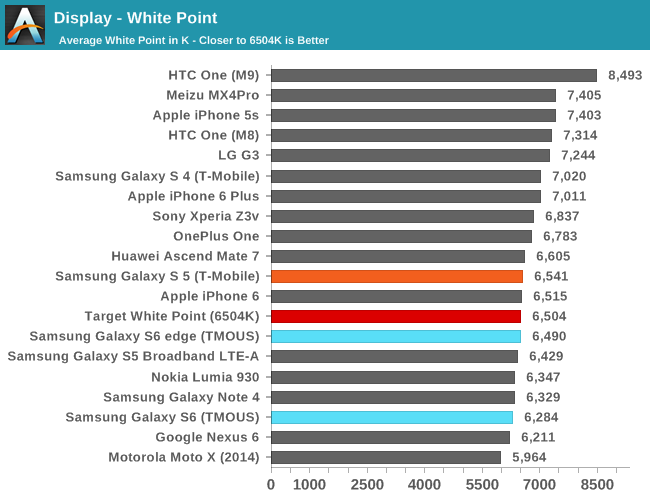

Moving on to grayscale, we can see that Samsung has done a pretty good job of controlling the white point and gamma across the saturation sweep, even if green is slightly dominant in both displays. We can also see that there is variation across displays as the S6 edge is closer to neutral while the S6 sample tends a bit warmer.
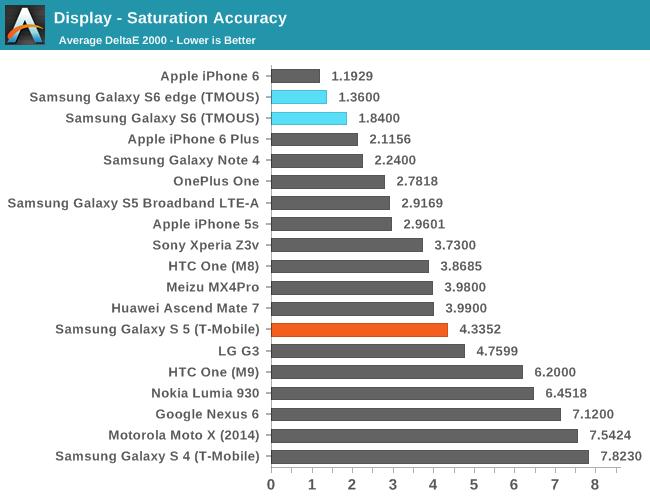
In the saturation sweep, both displays do an incredible job. I really don't have anything else to say here, because there's really no way to improve on the level of calibration Samsung has done on this display. Unless Samsung calibrates every single display in production, which is wildly impractical and effectively impossible to do, this is as good as it gets for a mass-produced device. Improving past this point will also be incredibly difficult to perceive, which means there's no real reason to go any further.
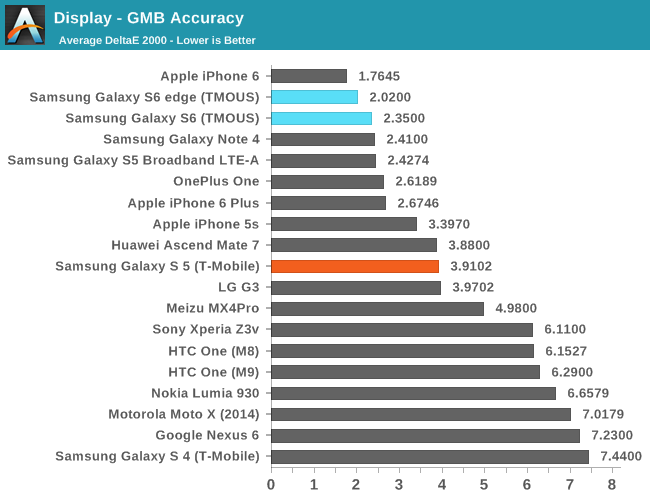
In the Gretag MacBeth ColorChecker, we can get an idea for overall color accuracy, which paints a picture similar to the saturation test. The only real problem I've noticed with these displays are the viewing angles, which can produce color shifting when the display is tilted. This is a bit of an issue on the edge variant as I can see that the edges of the display appear somewhat green when viewed head on, but otherwise there are no real issues to be seen here.
Overall, from a color standpoint it’s looking like Samsung has made one of the best displays available on the market today. Color accuracy is at the point where it’s pretty safe to say that the calibration doesn’t have clear color errors, and the peak brightness of the display is incredibly high. The 1440p resolution helps to compensate for the PenTile subpixel layout so in practice it’s effectively impossible to make out any pixels or the subpixel pattern. The contrast remains infinite as with most modern AMOLED displays, and overall it’s really hard to find any issue with the Galaxy S6’s display at first.
However while the S6 edge seems to be without any issues, the S6 does have some odd display issues that can be seen in direct sunlight as seen in the photo above. To be clear about this the photo above is a simple white screen, which should make the image completely homogeneous but instead there are two visible vertical lines and another jagged horizontal line that appear across the display. Inspection under a light microscope doesn’t really reveal what’s causing this, but the defect is quite visible in practice as seen in the photo above. I suspect that defects are rare, and in any condition other than direct sunlight I can’t see this visual problem.
While trying to see what this kind of defect looked like under a microscope, I also went ahead and took some photos of the subpixel pattern. As far as I can tell, it looks like the green subpixels have a bit more variance than what we’re used to as they tend towards oblong shapes rather than circles, which is likely due to the much tighter pixel density. It seems that this variance may cause some color shifting in certain units, which seems to remain a potential problem with Samsung's AMOLED displays. The pixel fill factor still remains surprisingly low when compared to LCDs, which usually have much higher active area. Due to the subpixel arrangement and some other differences in the display design, color shifting also remains higher than one would expect from LCD displays that are found in phones like the iPhone 6.
The final test that I managed to run on the Galaxy S6 is the brightness vs APL test, which shows the advantage of AMOLED’s emissive nature as it can dynamically increase brightness if the entire display isn’t showing a white screen. As a result, this means that in low APL scenarios like dark movie scenes and app themes it’s possible to see a maximum brightness closer to 700 nits or higher. However, in practice the display’s practical brightness is closer to 600 nits.
Overall, the display is still one of the best on the market, but I would be a bit concerned about fill factor for VR applications as that was a problem on the Note 4. Issues like purple smearing have been resolved, but there are still some problems with the display such as color shifting with changes to viewing angles and some variability in display quality from unit to unit. With this generation I suspect Samsung is either meeting or exceeding the best LCDs in quality, and with the next generation of AMOLED it’s likely that high end smartphones will have to migrate to AMOLED to remain competitive.



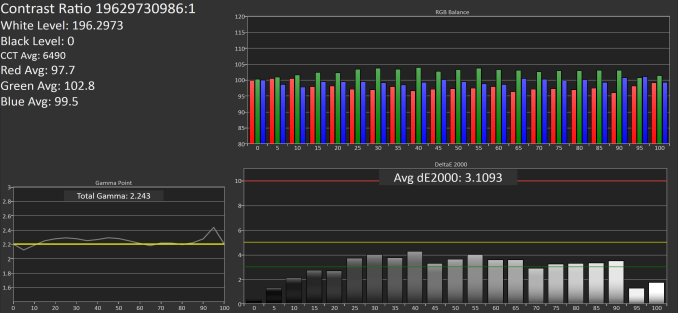
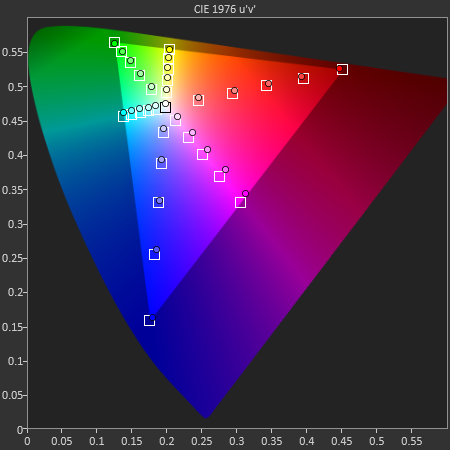
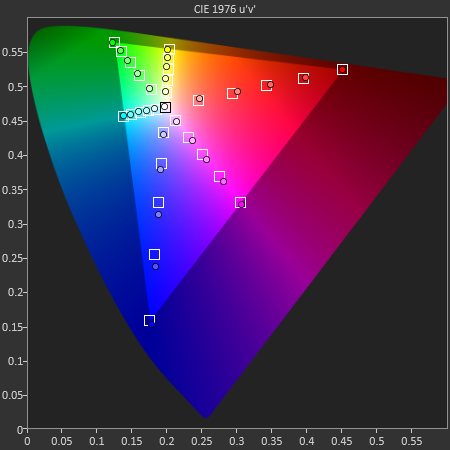
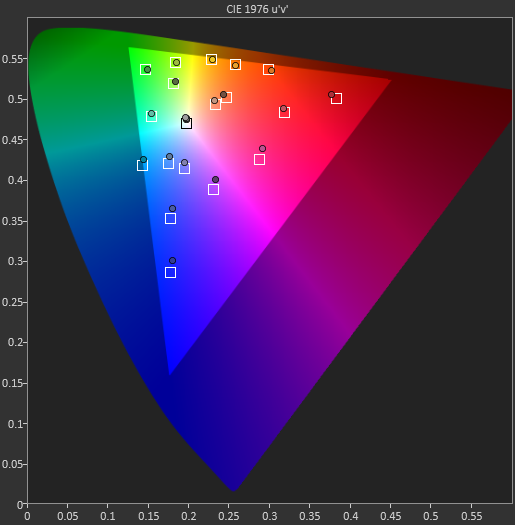

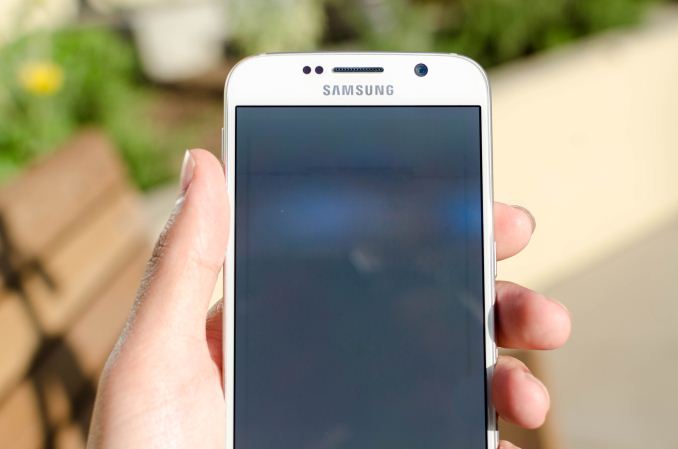
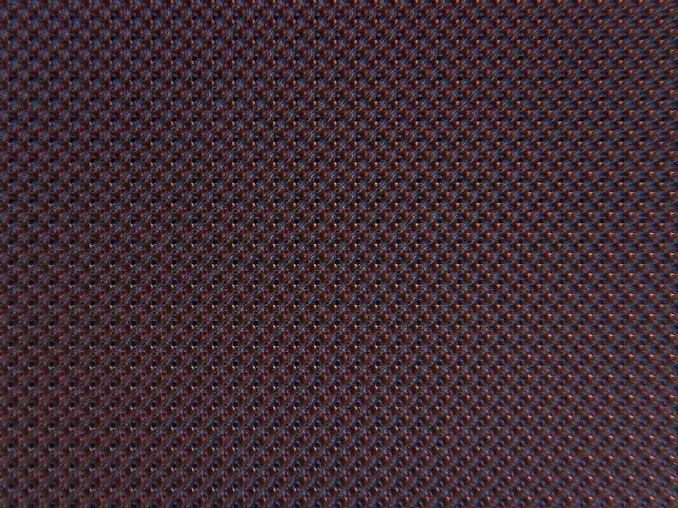
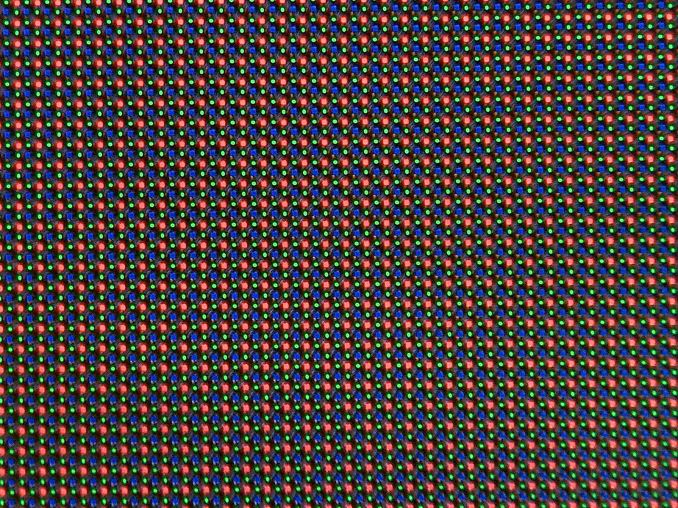
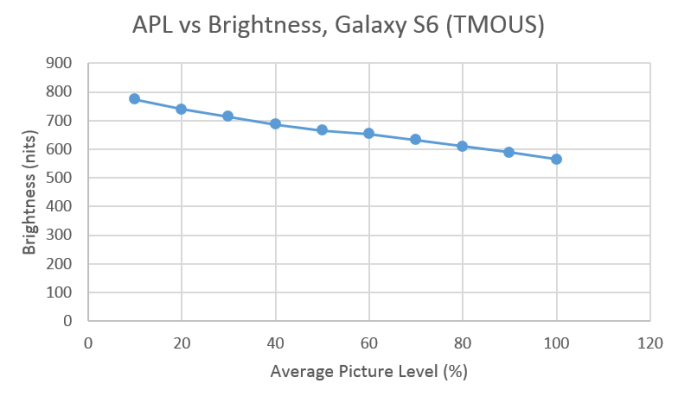








306 Comments
View All Comments
akdj - Sunday, April 26, 2015 - link
I'll re-read, but I could've sworn that was mentioned a couple times. Maybe it was ARS, but I'll check, as you're right. SVoice is the 'front end' to access GVoice and therefore allows Sammy to 'remember' your search information, etc. I've been able to work around, I believe, on my Note 4 now with the 5.0.1 updateUse Google Laincher. Disable Samsung account and sync and mine flies! Much faster than Nova, Go or vanilla TouchWiz and 'possibly' part of Google's Launch code, while using its only syncing data through Google (possibly SVoice or SRememberEverything in the background). I'll have to recheck and time but the update to LP has certainly sped all facets of the UI, updates, app launching and all around perceived 'speed'. I use a dark wallpaper, Nova Launcher 70% of the time and GLauncher the other portion.
Possibly Google's new 5.0.1 code is more specific to usage of its own services overriding those of carrier or the OEM. Again, unsure but damn it flies!
I'm going to spend this week with Google's camera to see if the Note 4 fan shoot the new raw still formats. As a decent camera with Lightroom on board and a CC subscription, I'm excited for the raw output of these hamdsets.
Are you speaking from experience? (Do you own one) or what you've read in reviews? I've certainly seen that mentioned and thought it was here ...pertaining to your suggestion it was forgotten. When I read it, I checked it in the Note 4 and using TW straight, indeed it runs through SVoice first with a significant delay (regardless of bandwidth). It seems quicker in Nova, slower in Go, fastest using Google Launch
pSupaNova - Tuesday, April 21, 2015 - link
Reading this review I can't help thinking Intel is in trouble if Samsung manages to ship lots of this handset.it will show that they are getting their SOC manufacturing into gear.
Schickenipple - Tuesday, April 21, 2015 - link
It's a little comical that a good portion of the 'pluses' of android phones have now gone the way of the iPhone. I fear there will be very little for Samsung lovers to hold over iOS soon.... How will you reboot when the OS freezes every day? Can't add an SD card??!! Blasphemy!Seriously though, they look pretty nice. Almost like an iPhone.
FlushedBubblyJock - Friday, April 24, 2015 - link
oh but if feels so industrial designed and so well built in my hand its so ergonomic my money impression is very, very high as my brain has been fried to a crisp from my desire to be somebody important and wealthy...FlushedBubblyJock - Friday, April 24, 2015 - link
excuse me but i have too go visit steve jobs grave for my monthly pilgrimage, and check my stock portfolio for my apple daily increase, an apple a day keeps retirement at bay !!!holmberg - Wednesday, April 22, 2015 - link
Could we get a measurement of the audio quality (i.e. the DAC and amplifiers, NOT the speakers), similar to what you did for the S5 here:;http://anandtech.com/show/8078/smartphone-audio-te...
FlushedBubblyJock - Friday, April 24, 2015 - link
oHHMMM ah I have recieved a premonition:When the time comes, metal industrial apple clone design won't be the glossy cocktail party rave it is now for all the reviewers... the new "nano carbon" hardshell and totally black design will be the inherently desired feel it up in the hand "win" the reviewers and crybabies all claim we want.
So, soon enough, when it's as cheap as a popcan is now, carbon fiber phone rage will storm the gates.... oh it's so light and so stiff, it feels so strong in my hand (like a fem commenting) ...
YEP - that's coming next - then after the reviewers convince the whole industry to trend toward carbon fiber and leave the metalheads in the dust (their newly created idiots wake) we will have another brain fart of gigantic proportion to deal with...
Warnings about carbon fiber slivers will go unheeded - there may be a whole section on how to reduce scratches and nano crackings and splittings of the fiber along with sales kits and superglue derivatives to rebond the nano cracks...
Next some of the more fervent feeler uppers will wind up in the hospital witth carbon paw poisoning or necessary eye cleansings since they sneezed up the raw carbon tubes into their own faces...
In the mean time they will have alzheimers from feeling up their aluminum metalized wonder industrial builds....
Yep, coming soon to a raw brain fart industry of elite 1% self love.
Forget that plastic if flexible, moldable, much more comfortable in the hand, lighter, and easily snapped apart and together - we must now have metal with apple 5star hex screws - and soon only carbon fiber probably with glass reinforced or ceramic fastener holes... and the elite will rave at the sensational high quality super high $$$$$ feel in their paws...
Yeah man, it's coming - if they charged ten grand for solidified rice paper the elite and feely nerd ego wackos would praise it to the moon and sky...
FlushedBubblyJock - Friday, April 24, 2015 - link
Where the heck is the scree resolution comparison and the pixels per inch chart putting the apple fans to shame ?I just read elsewhere the ppi which was always fanfare here when apple had the lead is 557 ppi ...
That's way above the 200-300+ I'm used to seeing...
So it's 4k resoluion and 557 pixels per inch - doesn't that deserve a whole page of glorious praise comparing to the other losers, which is everyone is it not ?
ubcjack - Tuesday, April 28, 2015 - link
Can Anandtech write an article to explain how Samsung implement PDAF over Sony's IM240 sensor? I'm really interested in the implementation.DIYEyal - Thursday, April 30, 2015 - link
If this phone was thicker with a bigger battery, dual sim, micro SD and waterproof it would have been the perfect phone for me.Rumors suggest that samsung is about to release a dualsim version, so I'll probably buy that.